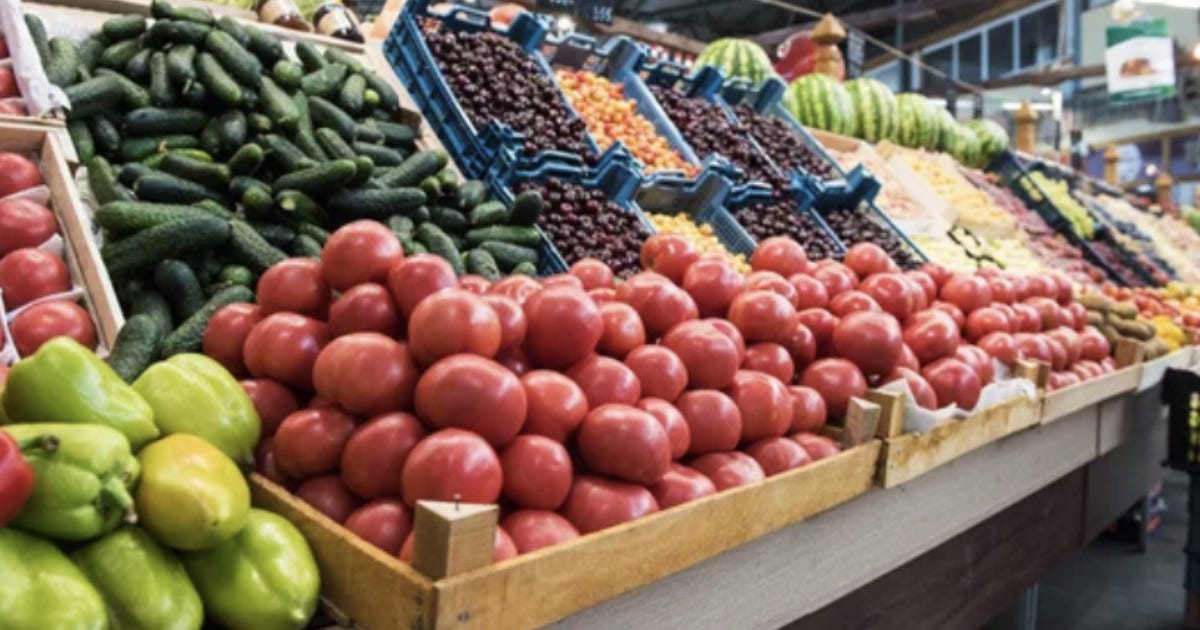OP-ED: The Real Reason Food Prices Jump Every October and February
Dr. Sylvain Charlebois writes, "Experts often blame inflation on global events, extreme weather, or the exchange rate. But much of our food price instability originates closer to home."
Author: Dr. Sylvain Charlebois
We’re now in November, and Canada’s so-called grocery “blackout period” has begun — that stretch when major grocers ask suppliers to hold off on price increases until February 1. On paper, it’s meant to stabilize prices during the holiday season. But in practice, consumers lose big time.
Experts often blame inflation on global events, extreme weather, or the exchange rate. But much of our food price instability originates closer to home — in the way food suppliers and grocery retailers negotiate their contracts. An analysis of twenty-five years of Statistics Canada data shows a clear rhythm: food inflation reliably spikes in October and again in February. Since 2000, prices have risen an average of 0.05 percentage points more in October and 0.03 points more in February than in other months — the most inflationary periods of the year.
This is no coincidence. October is the final month before the blackout period. In those weeks, suppliers rush to finalize new contracts with Loblaw, Sobeys, Metro, Walmart, and others, seeking to pass along higher costs for transport, packaging, and commodities. Retailers resist to protect their margins and market position. The tug-of-war ends with adjustments that flow straight into the CPI data almost every year.
Take 2022, one of the most turbulent years on record. Food inflation jumped from 5.1 per cent in January to 8.1 per cent by June, eased slightly through summer, then spiked again in October as suppliers locked in final prices before the freeze.
Once the holidays pass, the cycle reverses. February, the first full month after the blackout, ushers in a fresh round of increases as new supplier contracts take effect and grocers restock inventories. The Canadian Dairy Commission’s annual February adjustment adds further pressure, often setting the tone for other supply-managed sectors. In February 2022, food inflation rose a full percentage point — from 5.7 to 6.7 per cent — largely driven by contract renewals and regulated price hikes.
The PepsiCo-Loblaw dispute of that same year illustrated the fragility of these relationships. PepsiCo briefly halted shipments after Loblaw rejected new wholesale prices, leaving store shelves patchy and consumers caught in the middle. The incident revealed what happens when corporate brinkmanship replaces coordination.
This pattern — October surge, holiday stability, February surge — has endured for decades. It’s not the weather or the war in Ukraine; it’s how the system itself is built. Consumers pay the price for volatility baked into the supply chain’s architecture.
That’s why the proposed Grocery Code of Conduct, developed jointly by industry and provincial governments, matters. It aims to formalize how cost increases are communicated, how disputes are handled, and how much notice suppliers must give before passing along hikes. By introducing transparency and fairness, the Code could help smooth out these seasonal swings. It won’t erase inflation — global markets still move — but it could make prices more predictable for everyone from farmers to families.
The numbers tell a simple story. Over the last quarter-century, October and February have been the most inflationary months for food in Canada, while December consistently records the steepest average price drop thanks to holiday promotions. This isn’t random; it’s structural.
The Grocery Code of Conduct isn’t only about supplier fairness. It’s about giving Canadians a steadier, more transparent food system. We don’t need miracles — just predictability. Implemented properly, the Code could replace volatility with stability and conflict with collaboration.
— Sylvain Charlebois is director of the Agri-Food Analytics Lab at Dalhousie University, co-host of The Food Professor Podcast and visiting scholar at McGill University.



Regardless (and the Code of Conduct does sound like a reasonable idea) these days going shopping has become a sobering and scary experience.
Items we were used to seeing on the shelves simply disappear and sometimes are replaced but more often then not are not or replaced with substitute inferior product.
Hamburger that used to be 99 cents a pound is now around $10 a pound and a good sale price now rings in around five or six dollars a pound.
Soup that used to be on sale of 75 cents a can is now on sale (when on sale) for around two dollars.
Then there is that marvellous phenomenon known as "Shrinkflation"..
One example... One popular manufacturer of salad dressings recently reduced the size of their product by 50ml and increased the price of said same product substantially.
None of the aforementioned bodes well regardless of how well intentioned a "Code of Conduct" may be.
What we really need to do is gather to know aur local farmers and bypass the food conglomerate. Then maybe farmers will get a fair price!